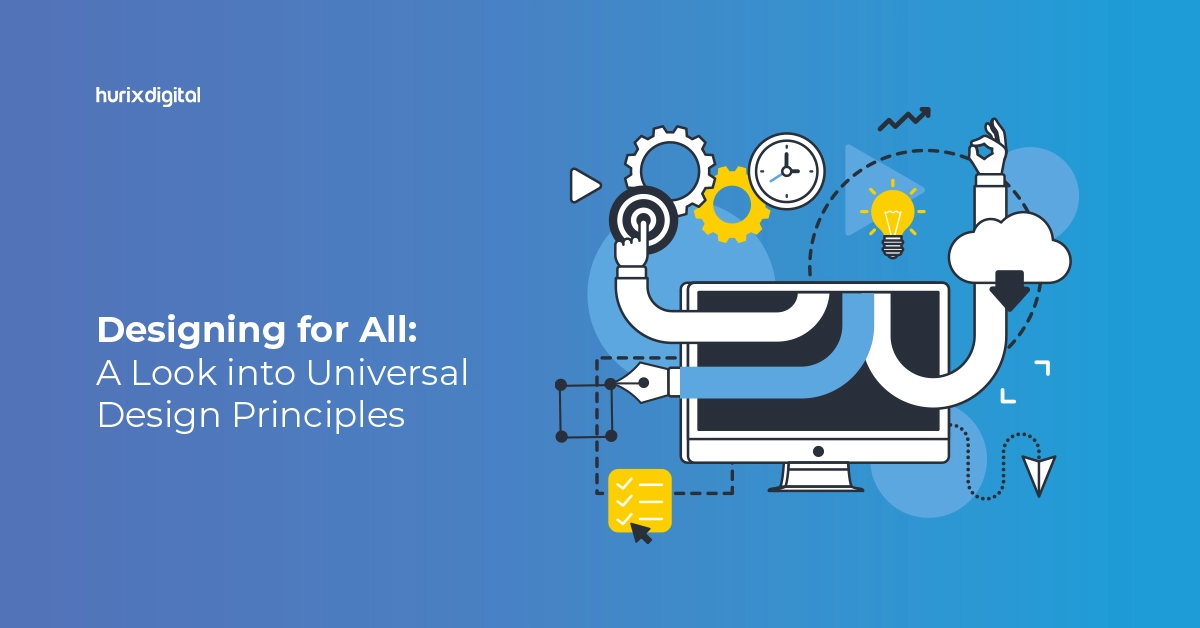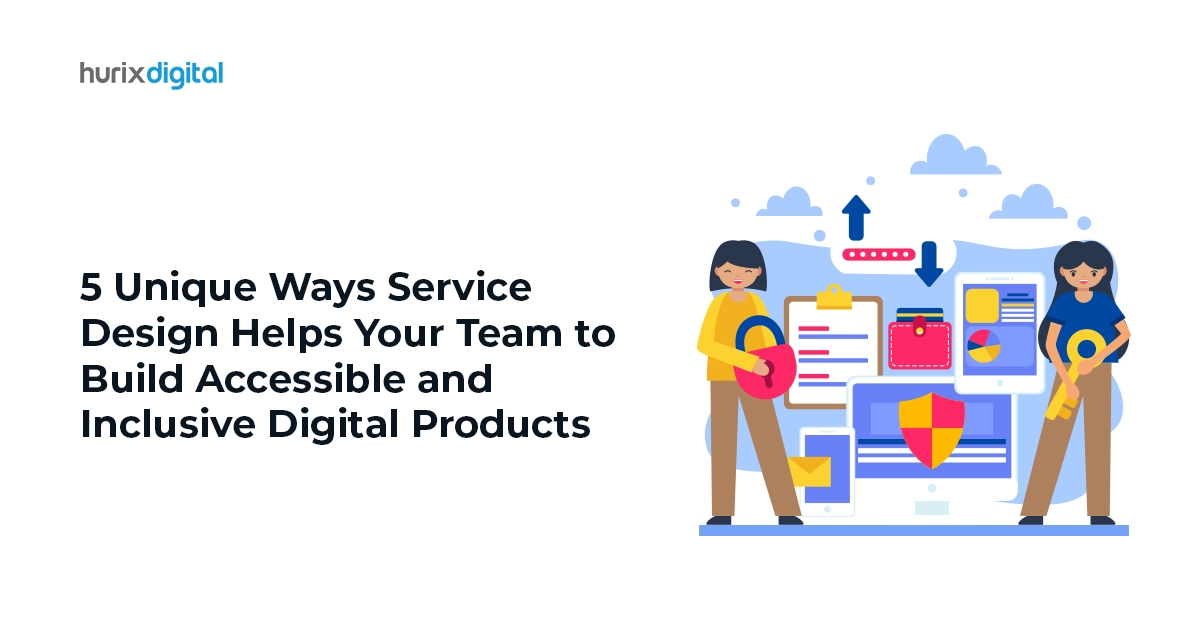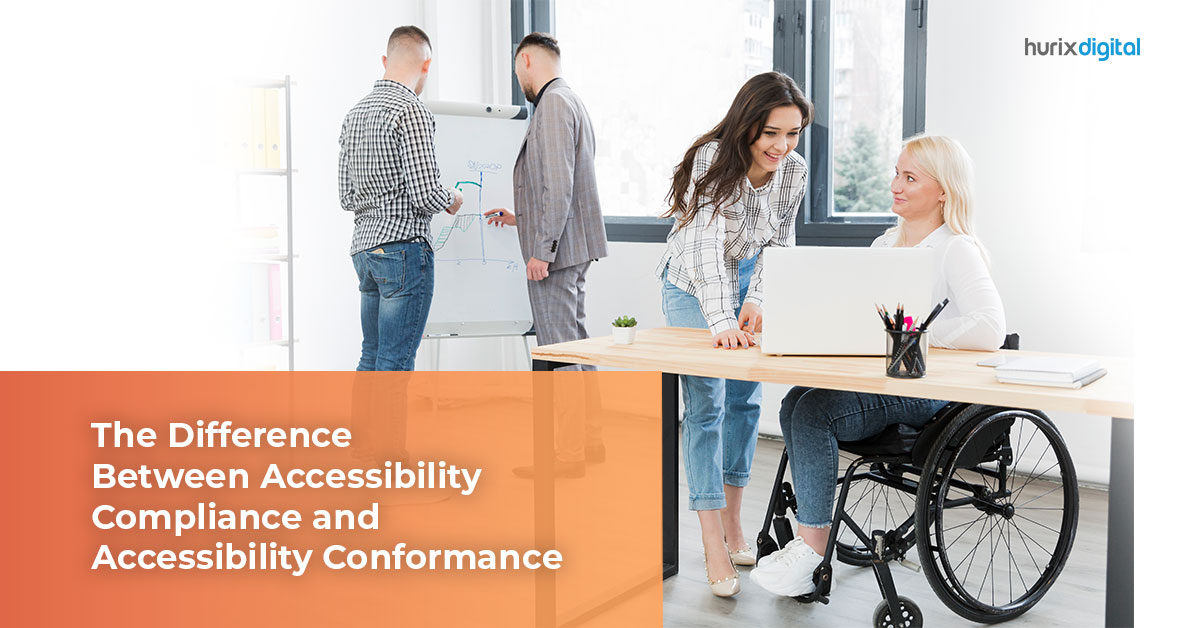
Creating Inclusive Designs: Universal Design Principles Explained
Summary
Discover universal design principles that ensure inclusivity in design. This blog explores how to create products and environments that cater to everyone.
Summary
This blog explores Universal Design Principles and guidelines for inclusive designs that enhance satisfaction, expand market reach, and ensure legal compliance, with practical tips and examples.
With approximately 1 in 6 people around the globe living with a physical disability, creating accessible designs has become an urgent need for the hour. Why?
Well, the world is moving towards building a digital ecosystem for itself. But the truth is, we can only truly prosper and yield maximum advantage of this advancement if we succeed at creating systems and technologies that promote maximum participation.
Accessible designs encourage this very idea.
This design approach is based on certain guidelines, called the Universal Design Principles, that promote accessibility and inclusivity for the masses.
So, if you are a business that’s looking forward to creating a website, read this blog before making your next move. Read on as we discuss the advantages of design accessibility and dissect the Universal Design Principles in depth. Let’s start!
Table of Contents:
- What are Universal Design Principles?
- What are the Top Benefits of Universal Design Principles?
- 7 Tips to Implement Universal Design Principles for Creating Accessible Designs
- Case Studies
- Wrapping Up
What are Universal Design Principles?
UDPs, often referred to as Inclusive Design Principles, are a collection of rules that control the design of spaces, goods, and services. They are intended to encourage the creation of resources that are equally available to all people, irrespective of their physical impairment, age, gender, or status.
According to statistics, those who use assistive technology devices such as screen readers, Braille displays, etc. cannot access around 90% of websites. The goal of Universal Design Principles, or UDPs, is to alter that.
Designers can produce inclusive resources that support equal access for all people and suit a variety of needs by adhering to UDPs. Furthermore, the Universal Design Principles underscore the need to create spaces and goods that can be utilized by the greatest number of individuals without requiring customization or unique design.
This approach not only improves usability for the disabled but also increases accessibility for the elderly, children, and others with temporary impairments.
What are the Top Benefits of Universal Design Principles?
If you think UDPs are only about maximizing accessibility, you are wrong. Here are three additional benefits you get from a website with an accessible design:
1. Enhances Customer Satisfaction
By allowing visitors to engage with your website in a way that suits them, you may increase customer happiness by putting Universal Design Principles into practice. These standards are, after all, predicated on the principles of adaptability, customization, and accessibility—the pillars of user-friendliness.
2. Increases Market Reach
Employing Universal Design Principles in a website makes it accessible even for the physically impaired. This helps broaden your market reach and brand visibility by a staggering rate.
3. Complies with Regulations
Last but not least, Universal Design Principles are developed in accordance with the laws and regulations enforcing global accessibility. Thus, building a website based on these design guidelines also ensures your website is compliant and, therefore, free from legal perils.
Also Read: Inclusive Design: The Key to a More Equitable World
7 Tips to Implement Universal Design Principles for Creating Accessible Designs
Here’s how you can leverage the principles of Universal Design to maximize accessibility and inclusive design in websites:
1. Understand User Needs
End users stand at the center of accessibility. Therefore, creating an accessible design for a website is impossible without considering their needs. So, conduct thorough research and understand what your target audience wants, their pain points, etc. Don’t forget to include those with disabilities.
2. Prioritize Intuitiveness
As per research, 78% of users agree they would most likely revisit a website with an intuitive layout. Apparently, this quality also happens to be the foundation of the Universal Design Principles.
So, if you want to build an accessible design layout for your website, you must prioritize intuitiveness. A great way to ensure that is by designing clean, simplistic designs.
3. Maximize Easy Perception
One of the core elements of Universal Design Principles is perceptibility. To put it in perspective, if your website is easy to comprehend, it’s considered to be in compliance with these accessible design guidelines. So, make it a point to use clear visuals and written content on your website. Add text descriptions, captions, subtitles, etc., wherever necessary.
4. Focus on Flexibility
Flexibility is directly correlated with accessibility. So, create website designs that can adjust themselves according to the user’s requirements. For starters, you can add options for changing font size, layout, style, etc., to accommodate users with readability issues.
5. Minimize Physical Labor
Finally, make it a point to add supplementary support options in your website designs to minimize the room for physical effort. Implement assistive technology features like screen readers, magnifiers, voice recognition, etc., to facilitate website usage.
6. Guarantee Steady Navigation
For accessibility, consistency in navigation is essential. Predictable navigation patterns are essential for users, particularly those with disabilities, to navigate a website with ease. Include consistent navigation links, breadcrumbs, and menus that are easy to understand on every page.
7. Examine Using Users and Accessibility Tools
It’s crucial to test your website with actual people with disabilities and accessibility tools. To find and address accessibility problems, use tools like keyboard navigation tests, color contrast checkers, and screen readers. In order to guarantee inclusivity and enhance usability, consider input from users who have disabilities.
Also Read: Top 5 Reasons for Digital Accessibility Compliance in Europe
Case Studies
Here are two potential case studies that you can consider highlighting in your blog on universal design principles:
1. The Metropolitan Museum of Art
Universal Design Principles were applied by the Metropolitan Museum of Art in New York City to improve accessibility across all of its physical spaces and online resources.
By offering tactile maps, audio guides, and accessible digital content, they concentrated on enhancing navigation for guests with disabilities. Their user base increased as a result of this program, which also markedly increased user engagement and happiness.
2. Apple Inc.
Universal Design Principles are well-known to be incorporated into Apple Inc.’s goods and services.
Apple takes steps to ensure that its technology is usable by people of different abilities. Some examples of these efforts include the VoiceOver tool for blind users, configurable display settings, and Siri voice commands. This dedication not only builds client loyalty but also establishes standards for inclusive design in the tech sector.
These case studies demonstrate how businesses may apply Universal Design Principles to their advantage and provide inclusive and accessible experiences for all users.
Check out this Guide: How to Create an Accessible Brand in 2024 and Beyond
Wrapping Up
Creating accessible designs might seem insignificant. However, that is your only option if you want to increase your website’s visibility and reach as far as possible.
So, make an accessible website design for your company right now by adhering to the seven Universal Design Principles.
If you don’t know where to start, Hurix Digital can help. With our comprehensive accessibility solutions, you can easily develop a UDP-compliant website for your organization.
Hurry up – Get in touch with us today!

Vice President – Digital Content Transformation. He is PMP, CSM, and CPACC certified and has 20+ years of experience in Project Management, Delivery Management, and managing the Offshore Development Centre (ODC).








